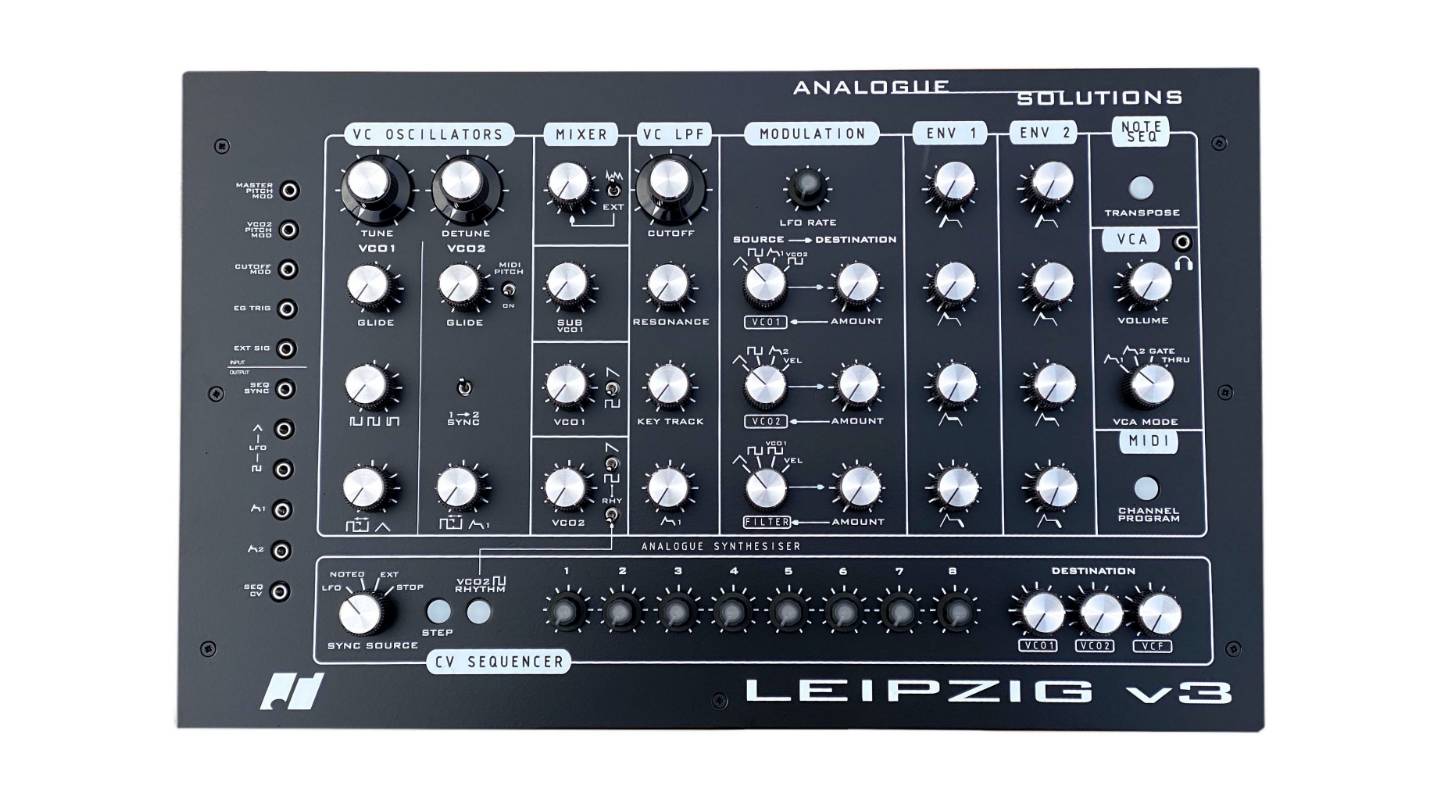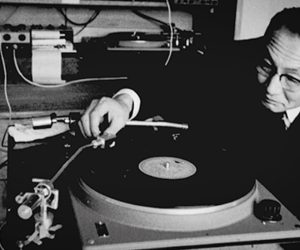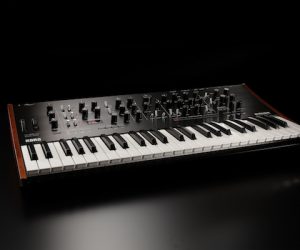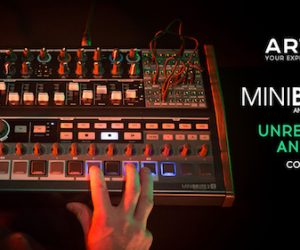
Analogue Solutions Leipzig v3
Boutique synth designer release redesigned desktop unit drawing from 2011 Leipzig-S analogue synth/sequencer
As a desktop device duly delivering a better fit, format-wise, for today’s production preferences, Leipzig v3 takes its design cues from Analogue Solutions’ Impulse Command semi-modular analogue synth. Though looking like this unit, Leipzig retains the same angry, analogue sound as its rack-mountable (Leipzig-S) predecessor, popularised by synth-pop pioneer Vince Clarke, long-standing Gary Numan producer Ade Fenton, and Nine Inch Nails’ Trent Reznor.
First of the new features, Leipzig v3’s CV patchbay is front-panel accessible, and the synth can be both cross patched within itself and also to external Eurorack modular synthesisers. Many parameters are modulatable via 3.5mm jack here, including a Master Pitch Mod and Cutoff, as well as Sequencer Sync and External Signal input.
Speaking of the latter, Leipzig’s capable eight-step analogue sequencer can also act as a musical modulation source to step through striking sound changes and switch off VCO 2 on selected steps, sounding like multiple synths playing at once! On a less analogue note, Leipzig v3 also has a ‘hidden’ digital 16-step sequencer that constantly stores every note played in via MIDI into volatile memory as a 16-step loop. It is always locked in sync with the analogue sequencer and new notes can be entered into the 16-step loop while the sequencers are running, permitting patterns to be constantly changed on the fly. Straightforward synchronisation of the sequencer to a DAW (Digital Audio Workstation) is perfectly possible by simply sending it MIDI Note 000; as such, it can be clocked at any tempo (and also divided down relative to the DAW’s tempo), stopped, started, and muted from the DAW itself — impossible with MIDI Sync, so something of an added bonus in itself for Leipzig v3 owners.
Other tweaks to the contemporary desktop design implemented in Leipzig v3 are comparatively subtle, such as a top panel-positioned (3.5mm mini jack) headphone output and rear panel-positioned power switch that is illuminated.
Illuminating additions aside, although Leipzig v3 clearly comprises some special features, fortunately its general architecture, signal flow — VC OSCILLATORS > MIXER > VC LPF > MODULATION > ENV 1 > ENV 2 > VCA, et al — and control nomenclature is still fairly standard, so the synthesiser itself is fairly straightforward to use.
Ultimately, Leipzig v3 sounds huge — especially evident when pressed into playing bass parts, at which it really reigns supreme. Sonic enrichments further abound as the MIXER and VC LPF sections can both be really overdriven, lending Leipzig v3 a really hard sound. Saying that, this of course can be toned down and softer synth sounds are also achievable — as, indeed, is everything in-between. Besides bass sounds, Leipzig v3 equally excels at creating electronic percussion — not just sounds, but also percussive loops, thanks to the flexibility of that onboard step sequencer. Percussive patterns can be quickly created and synchronised to — or recorded directly into — a DAW. As a semi-modular mainstay, Leipzig v3 can capably create leads, effects, modular-style sounds, and more, making it an ideal investment for anyone budgeting for only one analogue synthesiser since it covers so many bases… and bass sounds!
















RESPONSES